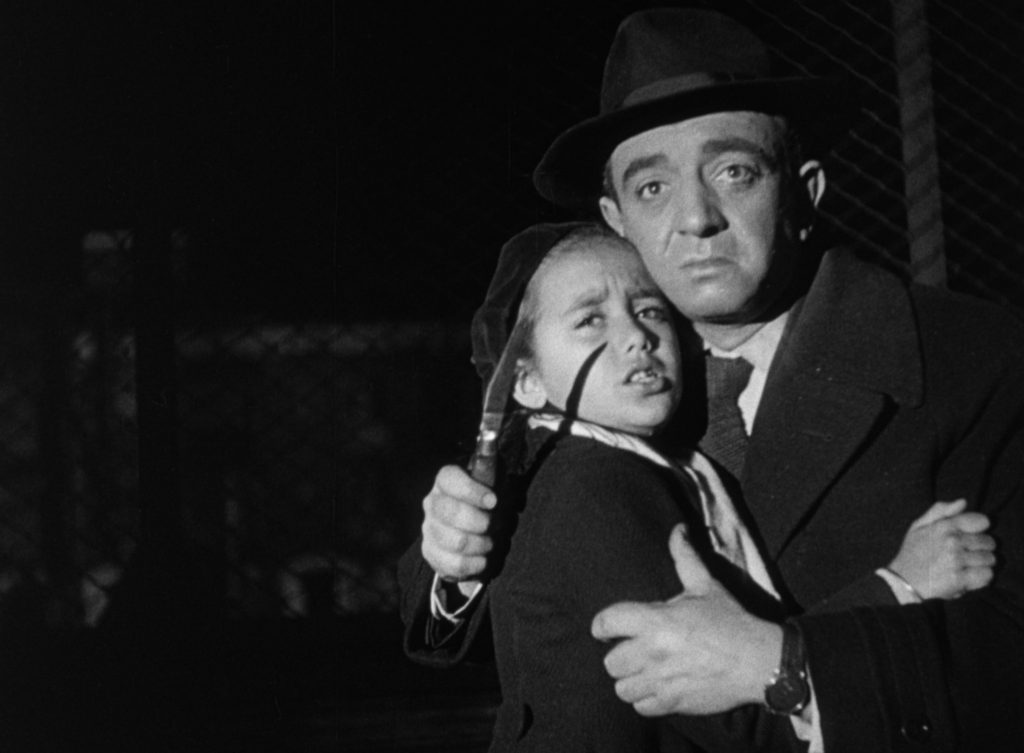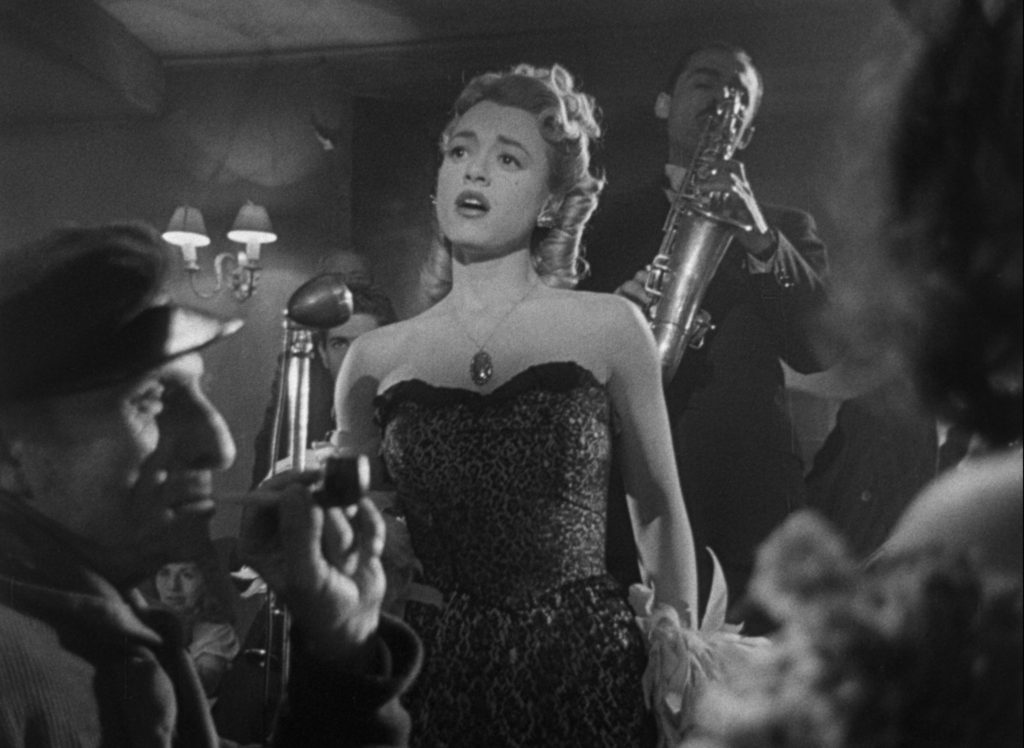
The Argentine suspense classic The Black Vampire opens with a man stumbling on steps, then with a Rorschach test, and then with a nightclub in which each of the patrons is a different version of Up To No Good. We’re in the underworld, but an underworld that is rocked by serial murders. And we can tell that this is no run-of-the-mill crime movie.
The city is consumed by a child murderer on the prowl, and the police are turning the city upside down. With the cops disrupting business, the criminals launch their own man hunt. If this plot sounds familiar, it’s because The Black Vampire is a remake of Fritz Lang’s 1931 M. As in the 1931 M, there is a blind balloon vendor, a killer whistling In the Hall of the Mountain King and and an underworld dragnet.
As the lead, Nathán Pinzón is AT LEAST AS GOOD as was Peter Lorre in the original M. Often sweat-beaded, Pinzón tightropes the line between scary and pathetic. This character is a complete pervert, but he’s aware of and tries to restrain his horrific compulsions.
Pinzón was chiefly known as a usually comic actor; he played the leering, cynical Carpax in The Beast Must Die. Pinzón’s birth surname was Garfunkle.
In contrast to the monstrous killer animated by Pinzon’s charisma, the prosecutor (Roberto Escalada) is a stick-in-the-mud; but, for some perverse spice, he is sexually frustrated, too, because his wife is physically disabled.
The director Román Viñoly Barreto is known for beginning and ending each film with a Biblical verse – and for the death of a child in each movie. Here he makes The Black Vampire as trippy as any 1953 movie could be. It’s best when it’s set in the nightclubs and streets and the haunts of the lowlifes, and highly stylized. When it is set in the prosecutor’s office and his apartment, The Black Vampire drags.
The Film Noir Foundation restored both Román Viñoly Barreto’s The Black Vampire and The Beast Must Die. I attended the premiere of both restorations at Noir City in 2020. I expect the Film Noir Foundation to issue both on DVD in 2020.

